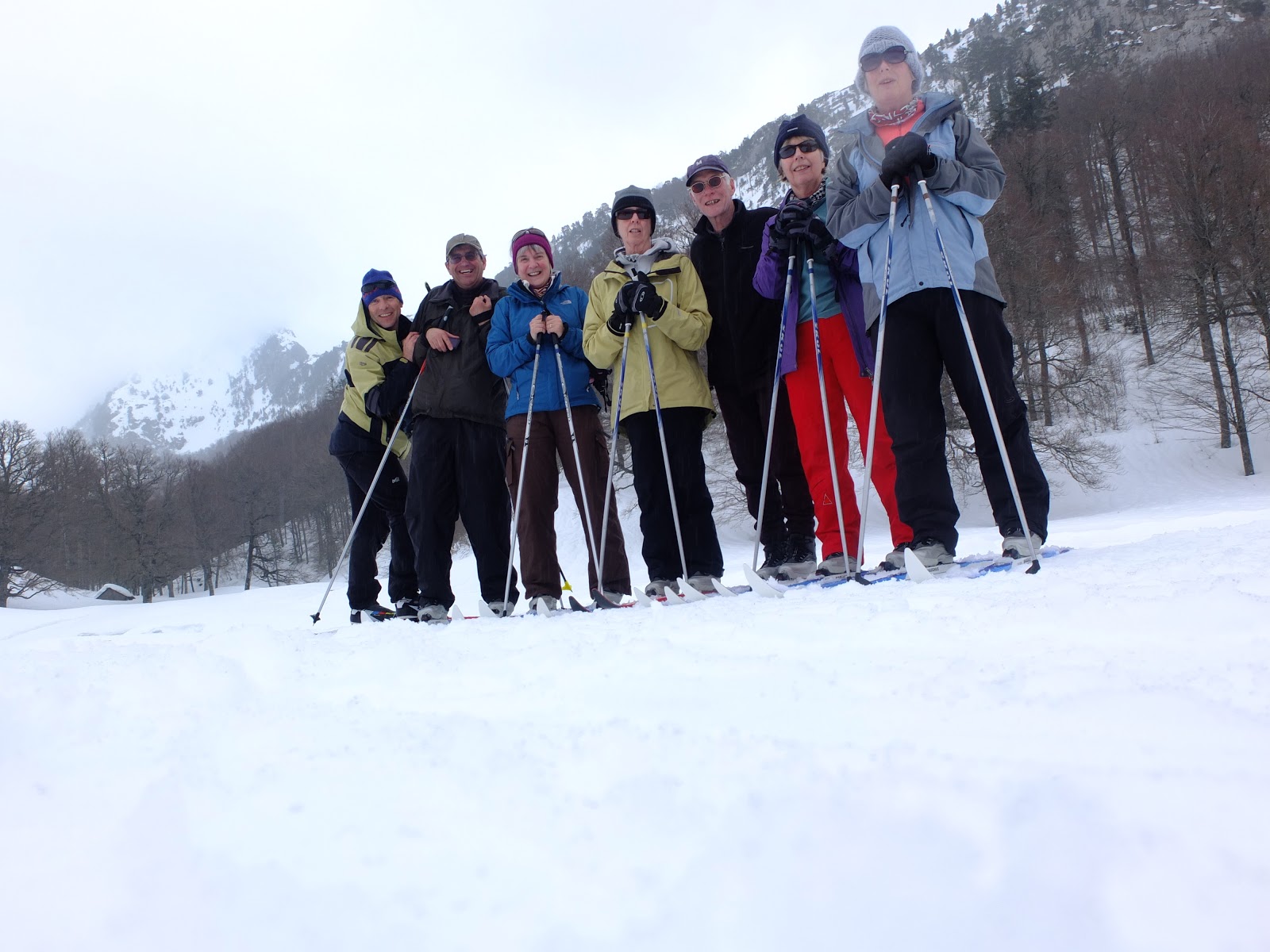We´ve had a spectacular snowy winter - perfect conditions for a week of cross country & back country skiing and snow shoeing in the Western Valleys.
Back Country Skiing, Ansó Valley
Tony, Sarah, Richard, Jayne, Jo and Alison - arrived on the Sunday evening and checked into the Hotel de La Val in Hecho. We had a briefing/chat about the week over a couple of beers (brewed here in the valley) and on Monday morning headed off to the Linza ski circuit in the Ansó Valley. Here the more experienced skiers explored the pistes through the Beech forest while I introduced the beginners to cross country skiing. We had a good lunch with hot soup by the fire in the Linza mountain hut and carried on skiing. Next day we went to the Somport ski circuit just over the border in France and had some excellent skiing around the forest and mountain trails. One or two of the group preferred to snowshoe so they had a great (and more stable!) time exploring different routes.
Snow Shoeing on the border
After a couple of days on prepared circuits we headed off piste up the Hecho valley, some of us on back country skis and other on snow shoes. We had a spectacular day with bright sun, great snow and the whole valley to ourselves! A real highlight was seeing the local pair of Lammergeiers circling just above us as we were having our lunch - hot soup, and chorizo sausage cooked up on my little stove.
Cooking chorizo for lunch, Hecho Valley. Richard has seen a Lammergeier!
The snow was perfect for back country and we all had a great time gliding along the valley making our own track. Some nice gentle slopes were perfect for fun descents and even attempting telemark turns!
Chocolate stop, Oza, hecho valley
The following couple of days were similar. One day we skiied up to Taxeras set below the stark Alanos ridge and had a wonderful, though quite challenging descent through thick snow. We had a very welcome beer in the village of Ansó on the way back to the hotel.
Linza, Ansó Valley
The last day was spent at Linza back country skiing and snow shoeing. We had a good lunch in the hut and had a good afternoon with most of us snow shoeing on a forest trail up to a pass and the Gamueta forest where we hoped to see the elusive White Backed Woodpecker (it didn´t show!) We did, however see a big band of Cranes migrating North over the mountains on their way to Northern Europe from their Southern wintering grounds.
Richard, Richard, Jayne, Alison, Tony, Sarah and Jo
That night Pepito at the Hotel de La Val prepared a paella for the group as a nice farewell gesture and then, next morning they headed off to Reus airport and back to the UK. The group couldn´t have been easier or nicer - thanks to all of you for making my job such a pleasure! It was also great that everyone enjoyed the snow in their own way - either on skis or on snow shoes. A big thankyou to all for coming and especially to Tony for getting you all organised to come! See you all again soon I hope!













-1.jpg)












